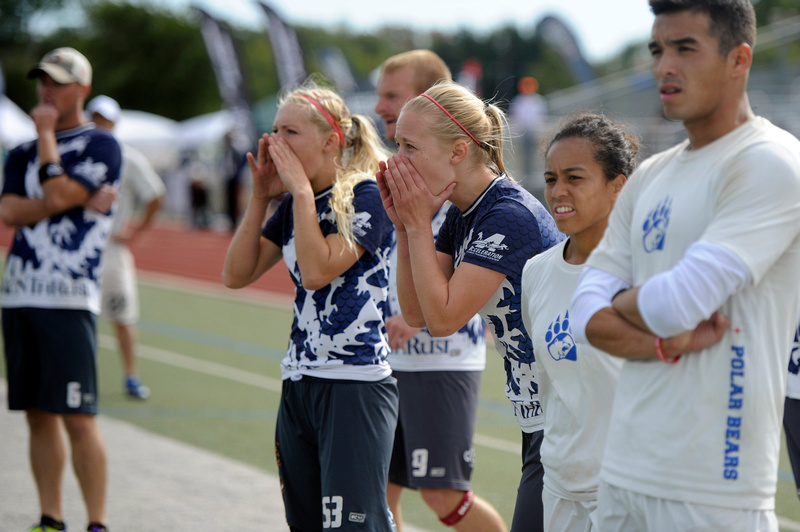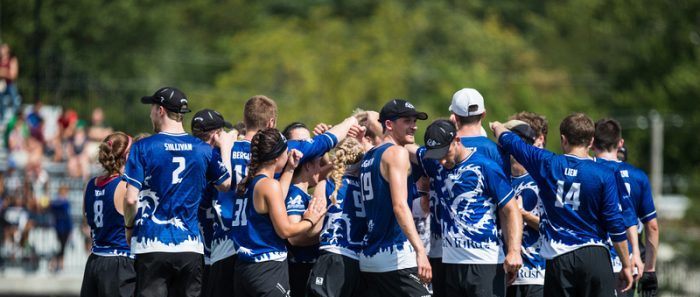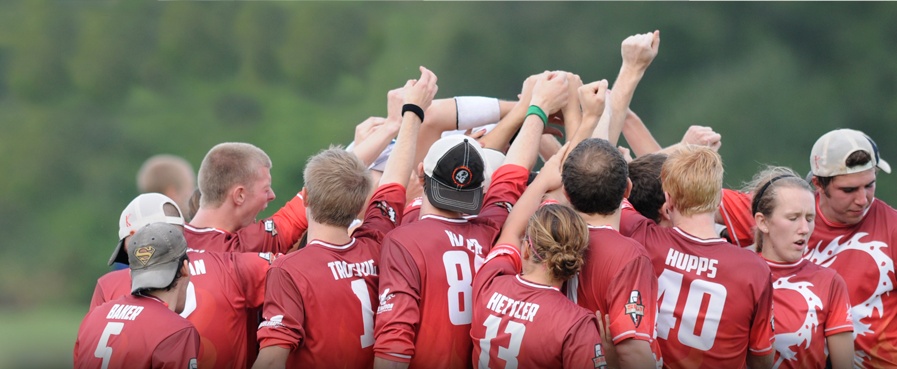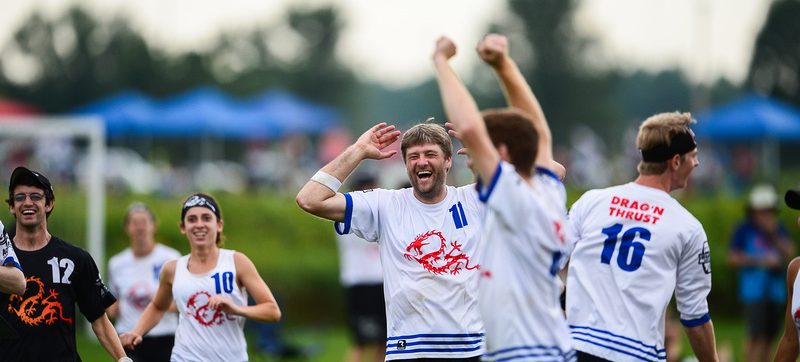By Pete Carr
2014 – The year when the Seattle Seahawks claimed their first ever Super Bowl title. Their road hasn’t been easy, however through their dedicated fans they had an edge over anyone who stepped into their home stadium. This year they set a record with a 137.6 decibel reading causing a minor earth quake. In 1984, the Seahawks retired the number #12 from their jersey and created a flag with that number on it, representing their die hard fans whom constantly produced the loudest noise to any away team traveling in. Through their fans, the Seahawks could be huge on D, make spectacular plays on offense and put their opponents on their heels. The Seahawks attribute a good deal of their success to their huge fan base and how the 12th man impacts their team.
We can draw this same parallel to ultimate. While most teams have anywhere between 20-27 players on them, there are only 7 players on the field at a time. Many of those other individuals are either resting, chatting, or intently watching the game unfold on the field. Many realize that making up-calls and cheering for your teammate can positively impact the game for your team, however this is much easier said than done. I know for Drag’n Thrust, we strive to always be positive, and always spread encouragement while our players are on the field. After a few breaks are let off, it can be difficult to continue and push through the rough patches, providing inspirational cheer and hoping to save a few players from spiraling out mentally. It’s easy to be positive when heads are up, however the challenge comes when you’re down and just grinding to get out. The importance of that 8th player is something that no one can understate.

Photo by Jolie J Lang – UltiPhotos.com
A psychology experiment by Lysann Damisch of University of Cologne in Germany found that positive encouragement improved performance of tasks. The study had participants work through a set of tasks. Those who were told “good luck” finished the task in 3 minutes, while the rest finished in 5 minutes, on average. The main conclusion of the study was the idea that injecting confidence into the participant leads to higher performance. Through sideline presence we do this for our team. There is nothing better than having no doubt in your mind that your team is 100% behind you as you bust your butt on the field, hearing cheers as you work hard on the mark or streak deep to contest a huck.
Your entire sideline is one player, one mind, with one goal – to help facilitate positive reinforcement to the players on the field with the realization that not everything will always work out perfectly. There are times when things just aren’t going to go your way. It’s at that moment that you need to dig deep and focus on helping your teammates realize that you have their backs.
How to best work as an 8 player unit.
While there is no perfect system, here are a few key things that you can start (or continue) to focus on.
– Positive Reinforcement:
You’re on the O-Line about to receive the disc in a game with no breaks. A teammate comes over and fires you up building your confidence as you stand on the line waiting for the pull. This type of positive reinforcement is exactly what the above study talks about. There are teams that are quite nervous sitting at a 12-12 point, while good teams are confident and prepared not only individually but collectively as a team through positive reinforcement.
– Up Calls:
A simple but easy one to start with. This works best when you’re able to spread the sideline and have various sideline players communicate over different parts of the field. Having someone near the handler yelling “UP” when a huck goes off, often does not help a down field defender (or offender) as they simply can’t hear the call. By spreading the length of the field you’re able to better notify your teammates of what’s happening near the disc.
– Mark Calls:
Similar to Up Calls, however directly communicated to the mark. By doing this you help the mark take specific throws away and can help them realize a bit more what’s developing downfield without them having to look around. This is best done by someone who is behind the thrower and can see the full field (staring at the defender mark).
– Celebration:
When your team scores and you’re on the sideline, you’d better be running into that end zone to cheer on your team. While some scores are glorious defensive points, and some are cookie cutter offensive points, they both have just helped your team get one step closer to victory. Being in the end zone after that point is scored, regardless of how it was scored, not only reinforces confidence in those that were on the field, but those that were off are energized with that excitement which is now shared.
– Communication:
Having a handful of players on the sideline talk with individuals and cheer them on during tough points really helps those on the field overcome the mental battles they may be having. Along with positively reinforcing your teammates, you’ll be able to talk them through where the disc is on the field.
The main goal is to remain positive.



